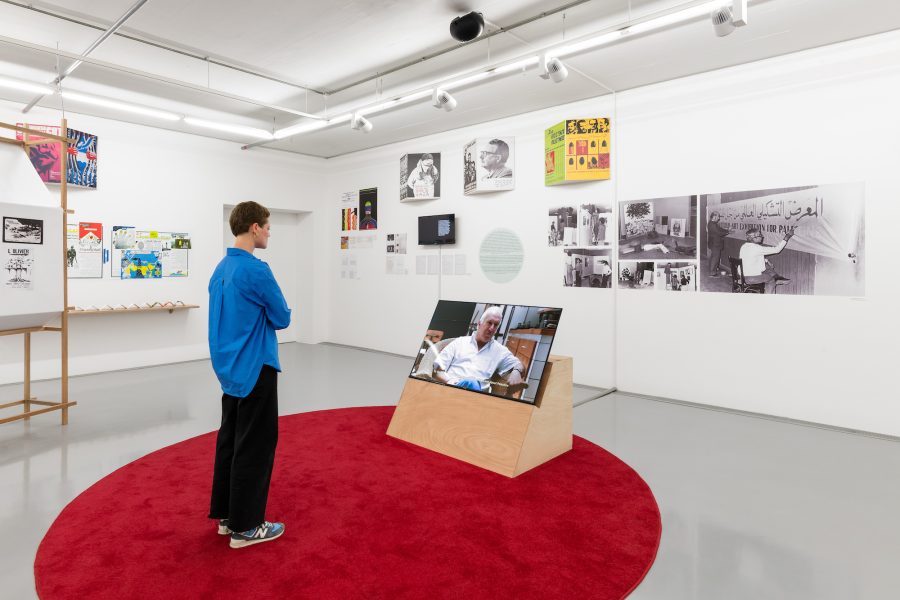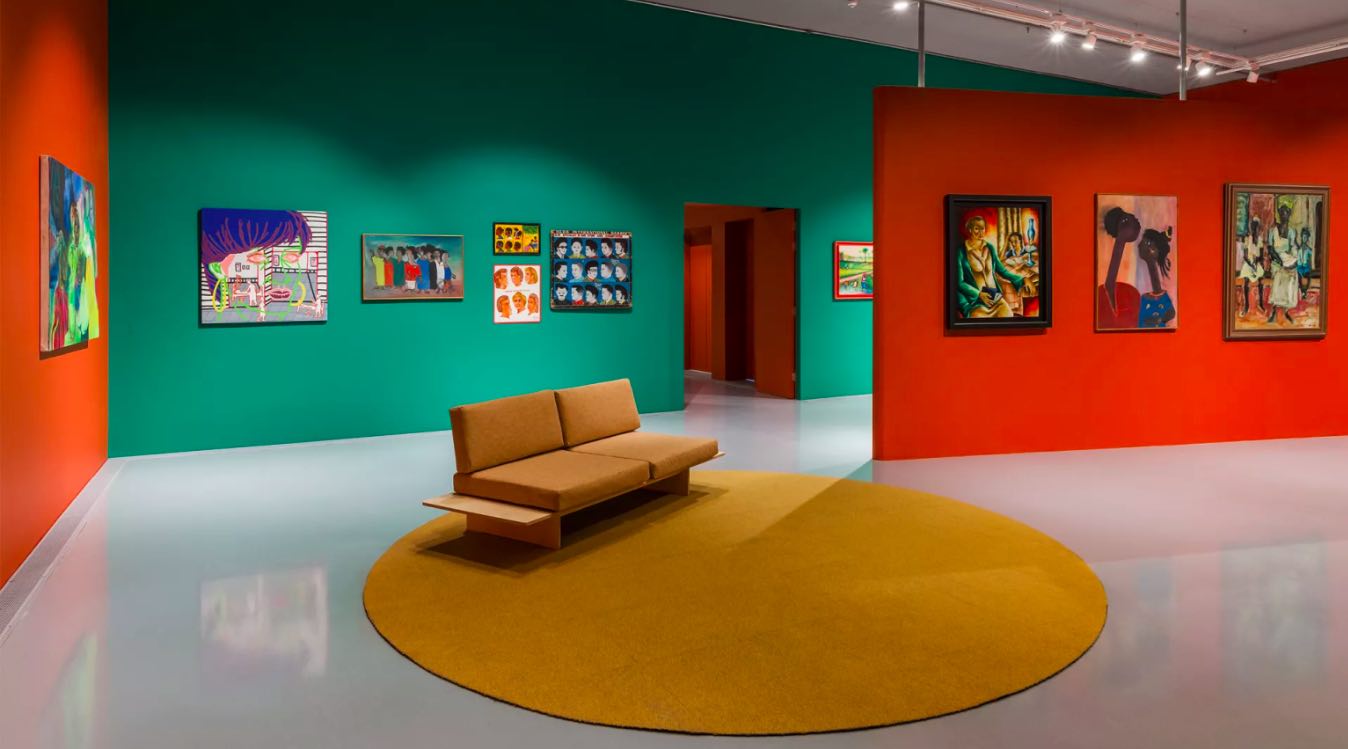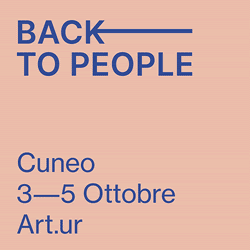

“Mamma, chi è questo signore?’”
Il signore è Yasser Arafat, ritratto in una foto a colori: sorridente, guarda diritto l’obiettivo. Chi me lo chiede ha 9 anni e delle centinaia per non dire migliaia di documenti e fotografie raccolte nel muscoloso progetto archivistico-documentario Past disquiet è colpita proprio da questo signore sorridente.
Dieci anni di ricerca si vedono tutti in un progetto messo in scena in questa sede Sudafricana da Studio Safar e curato da Kristine Khouri e Rasha Salti che racconta di “musei in esilio”, ovvero collezioni d’arte legate ad artisti impegnati in particolari cause politiche.
Documenti, film, interviste, libri, magazine, fotografie, posters, pamphlets, da Beirut, Parigi, Rome, Rabat, Baghdad, Tokyo, Venezia, Santiago, Managua e qui ancora di più Cape Town: tutti tracciano le storie di artisti in esilio, militanti, spesso, nonostante tutto, sorridenti.
“…ci siamo resi conto che stavamo facendo emergere una contro-storia della pratica artistica, delle storie delle mostre, della museologia e della mobilitazione politica attraverso l’arte in tutto il mondo…”.
Paola Nicolin
PAST DISQUIET
Zeitz Museum of Contemporary Art Africa, Città del capo, SudAfrica
Past Disquiet is a documentary and archival exhibition based on research conducted by the curators for over a decade around four seed collections of art that were intended to be “museums in solidarity” or “museums in exile”, that incarnated the engagement of artists with a particular political cause. It is an exhibition of stories, told with documents, photographs, pamphlets, press clippings, posters, interviews, and videos.
The research began as the two curators explored how the International Art Exhibition for Palestine, which took place in Beirut (Lebanon) in 1978 and was meant to become the nucleus for a museum in solidarity with the Palestinian people’s struggle. Despite the size and scope of the exhibition, yet unprecedented for the region, it seems to have been totally forgotten.
The story of that museum was closely connected to other similar collections and initiatives, namely, the International Museum of The Resistance ‘Salvador Allende’, the Artists Contre/Against Apartheid, and Art for the People of Nicaragua. Their reconstructed stories trace complex and intersecting networks, and rarely explored history of politically engaged artists mobilized in different modes around the causes inscribed in the tri-continental international anti-imperialist solidarity movement of the 1960s, 1970s and 1980s, such as the opposition to the Vietnam War, the rejection of the Pinochet dictatorship and of the Apartheid regime in South Africa, and in support of the Palestinian struggle.
(Extract from the press release)


When We See Us: A Century of Black Figuration in Painting non è solo una magnifica esposizione che celebra la resilienza, l’essenza e la carica politica della Black joy; non è solo una pubblicazione complessa e un programma pubblico – per lo più accessibile on line – dove si allargano le prospettive critiche sulla pan – Africa e la conseguente pan-Diaspora; non è solo un percorso magistralmente disegnato dallo studio di architettura Wolff Architects. Di When We See Us mi ricordo, e penso mi ricorderò ancora a lungo, della sua carica di bellezza potente, del trionfo di un figurativismo quasi crudele che ti inchioda a vedere “quando noi ci vediamo”. Un esercizio di sguardi incrociati al quale non puoi sottrarti.
La cornice è il Grain Silo, monumentale ex granaio di Cape Town diventato museo d’arte contemporanea: un gigante in vetro e cemento svuotato da quell’illusionista di Thomas Heatherwick. Dalla terrazza dove i teens si fanno selphie riflessi nelle grandi vetrate vedi Robben Island, il carcere isola di Nelson Mandela.
Paola Nicolin
‘When We See Us’: Black figurative painting at Cape Town’s Zeitz Museum of Contemporary Art Africa
When We See Us: A Century of Black Figuration in Painting comprises an exhibition, publication and discursive programming that explores Black self-representation and celebrates global Black subjectivities and Black consciousness from pan-African and pan-diasporic perspectives. It boldly brings together artworks from the last 100 years, by Black artists working globally, into dialogue with leading Black thinkers, writers and poets who are active today.
With a focus on painting, the exhibition celebrates how artists from Africa and its diaspora have imagined, positioned, memorialised and asserted African and African-descent experiences. It contributes to critical discourse on African and Black liberation, intellectual and philosophical movements. The title of the exhibition is inspired by Ava DuVernay’s When They See Us, the 2019 miniseries. Flipping ‘they’ to ‘we’ allows for a dialectical shift that centres the conversation in a differential perspective of self-writing as theorised by Cameroonian political scientist Professor Achille Mbembe.
The exhibition, designed by Wolff Architects, features more than 200 works of art from 74 institutional and private lenders located in 26 countries. When We See Us celebrates the resilience, essence, and political charge of Black joy. The exhibition is organised around six themes: The Everyday, Joy and Revelry, Repose, Sensuality, Spirituality, and Triumph and Emancipation. Figurative painting by Black artists has risen to a new prominence over the last decade and this exhibition connects these practices, revealing deeper historic contexts and networks of a complex and underrepresented genealogy, stemming from African and Black modernities. The exhibition highlights relationships between artists and artworks across geographic, generational and conceptual contexts, and foregrounds what lead curator Koyo Kouoh refers to as ‘parallel aesthetics’.
The exhibition includes works by artists such as Njideka Akunyili Crosby, Zandile Tshabalala, Jacob Lawrence, Chéri Samba, Danielle McKinney, Archibald Motley, Ben Enwonwu, Kingsley Sambo, Sungi Mlengeya, Lynette Yiadom-Boakye, Cyprien Tokoudagba, Amy Sherald, Mmapula Mmakgabo Helen Sebidi and Joy Labinjo, to name a few, and in many instances bring these artists and their practice in dialogue for the first time.
((Extract from the press release)











